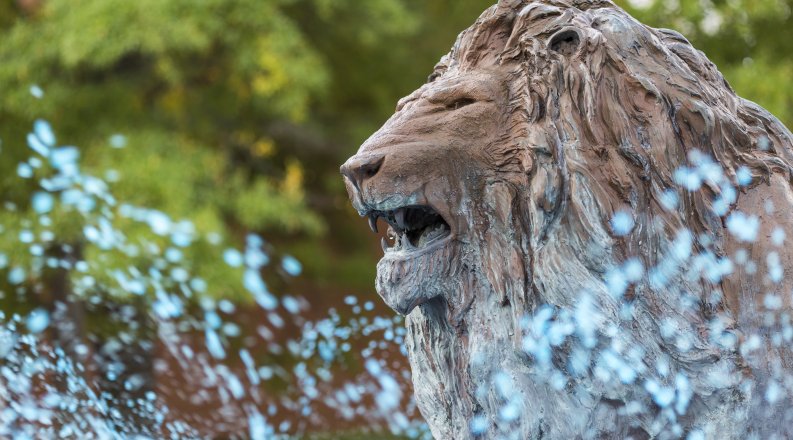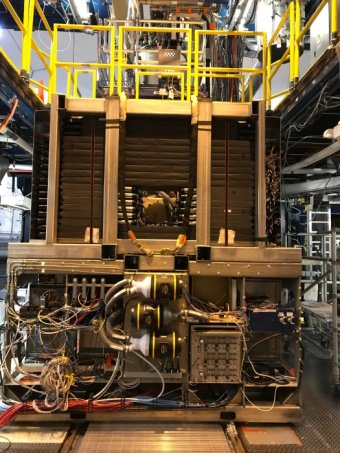A team of scientists and engineers from ODU, MIT, Tel Aviv University, Jefferson Lab, Universidad Tecnica Federico Santa Maria (Valparaiso, Chile), and Florida State University, just completed BAND, the Back Angle Neutron Detector, for use in Jefferson Lab's Hall B. BAND consists of 140 plastic scintillator detectors, read out by 256 photomultiplier tubes (PMTs). These detectors emit a tiny flash of light when a subatomic particle interacts in the plastic. The tiny flash of light is converted to an electrical signal and amplified by the PMTs. Each detector is about 3" square and between 2 and 6 feet long. They are wrapped in black to keep out ambient light. The total weight of all the detectors is about one ton. About half of the detectors were constructed at ODU by a team consisting of Tom Hartlove, Katherine Price, Caleb Fogler, and Florian Hauenstein, under the supervision of Professor Larry Weinstein.
The BAND detector will be used in experiments at Jefferson Lab to measure how the quark structure of protons changes when the proton is in a nucleus and whether that structure change is affected by the speed of the proton in the nucleus. They will aim a beam of high-energy electrons at a liquid deuterium target. Deuterium is an isotope of hydrogen with one proton and one neutron. The experimenters will look at events where an electron scattered from a quark in the proton, and the spectator neutron was detected in the BAND detector. The speed of the spectator neutron equals the speed of the proton before it was hit by the electron. By comparing the results with fast neutrons and with slow neutrons the experimenters can determine if the quark structure of the proton depends on its speed in the nucleus.




